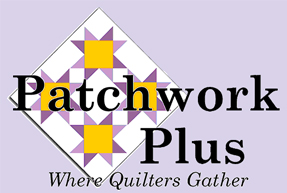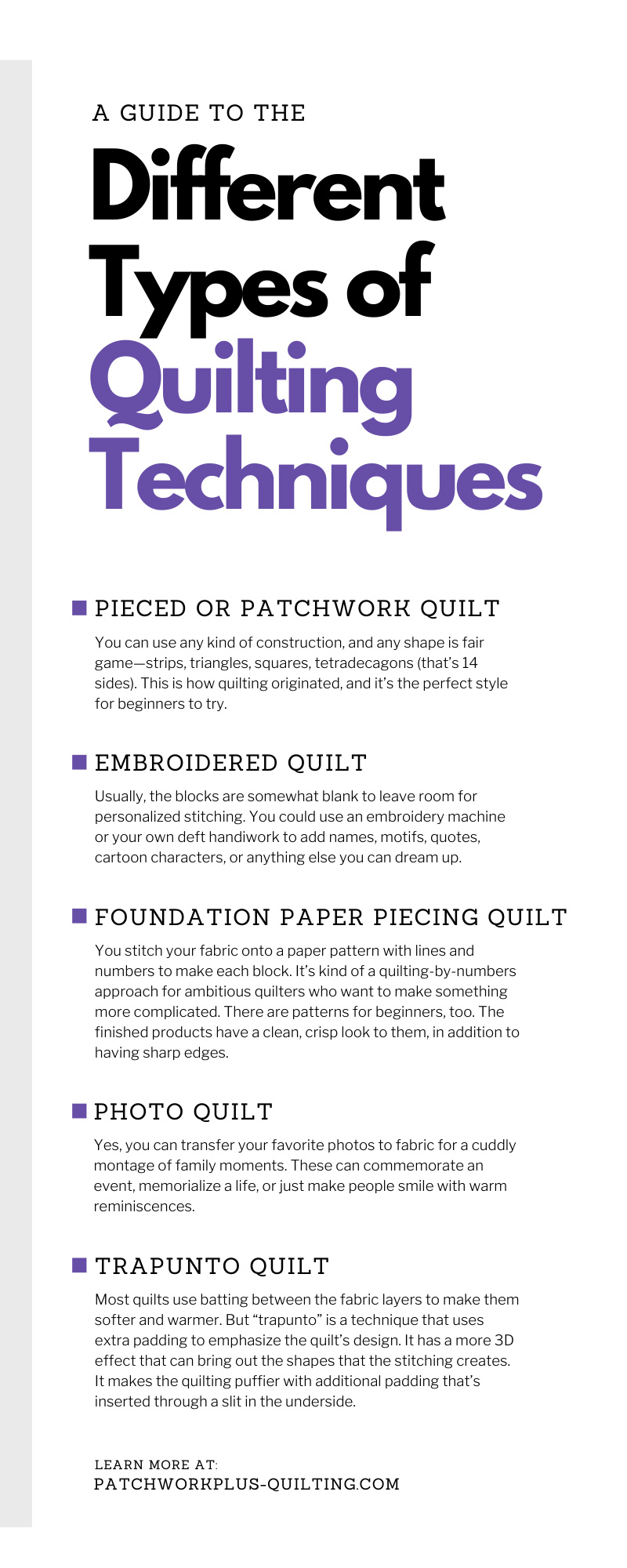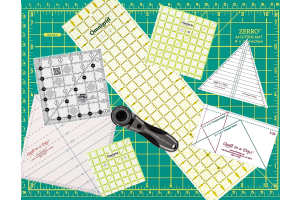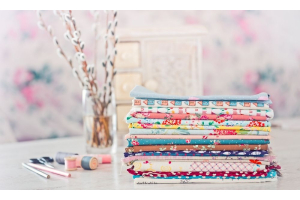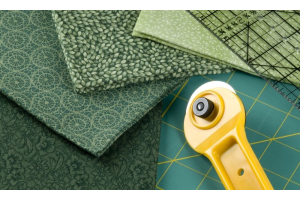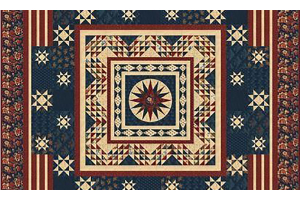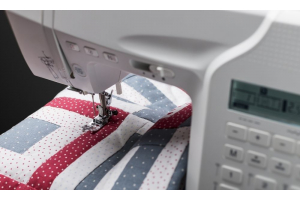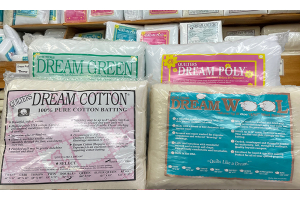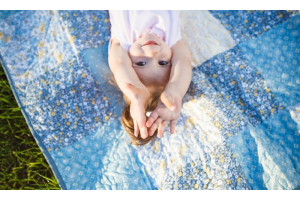A Guide to Quilting Techniques
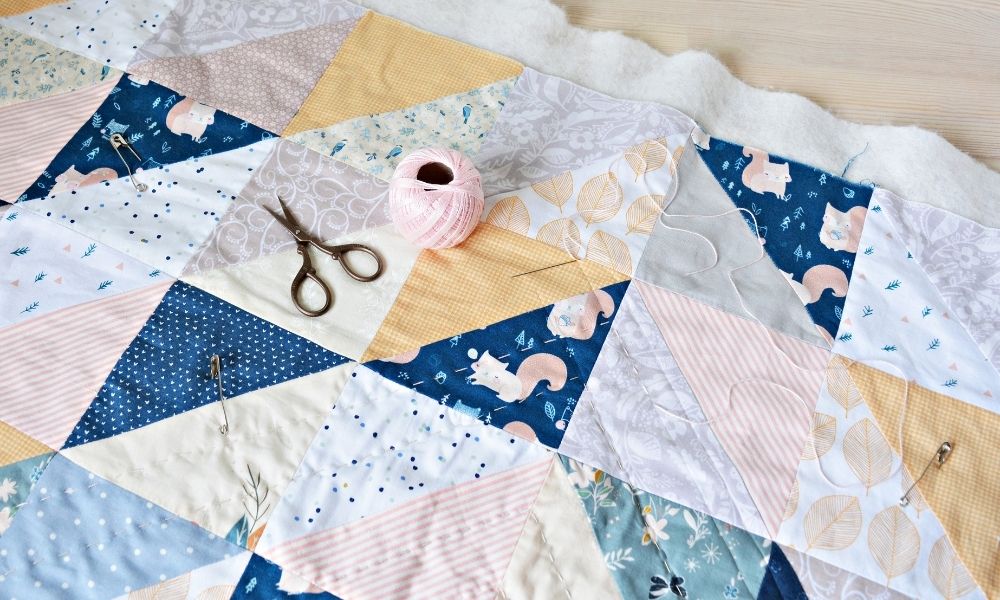
“Quilt” is a sweet, folksy word, isn’t it? And yet, it encompasses so many traditions, styles, and possibilities that it should probably have many more letters. It’s actually an umbrella term for an enormous variety of styles. While all quilts have some things in common—two layers of fabric with batting in the middle, for instance—beyond that, the quilter can go in endless creative directions. Just take a look at this guide to the different types of quilting techniques to inspire your next homemade work of art.
Pieced or Patchwork Quilt
This basic form of quilting is created by sewing together contrasting pieces of fabric, usually to form a block. In the past, resourceful quilters would recycle old clothes and scraps into incredible designs. Today, one of the great joys is in choosing new fabrics and color palettes, or recycled materials that have meaning to us. You can use any kind of construction, and any shape is fair game—strips, triangles, squares, tetradecagons (that’s 14 sides). This is how quilting originated, and it’s the perfect style for beginners to try. You can plan a themed quilt or wing it. As long as it’s made with love, it’ll come out beautifully.
Appliqué Quilt
When you cut out shapes from different fabrics and apply them to the top of your quilt, you can create a design or map out an entire scene that tells a story. It’s an artful way to free-hand your quilt, and you can either stitch the appliqués onto the quilt or glue them down. Even the edges of the appliqués can contribute various effects. With a zig-zag stitch, they won’t fray, or you can leave them raw. Roll the edges under, and you can sew them in place for a clean look. Keep it simple with a solid-colored background, or play with prints and textures.
Embroidered Quilt
Yes, you can combine a passion for embroidery with quilting. Usually, the blocks are somewhat blank to leave room for personalized stitching. You could use an embroidery machine or your own deft handiwork to add names, motifs, quotes, cartoon characters, or anything else you can dream up. This kind of quilt is ideal for gifting. You don’t have to customize the whole quilt; if you prefer, you can just embroider one block for a meaningful touch.
English Paper Piecing Quilt
Have you seen those vintage quilts with flowers made of little hexagons? Those are made with English paper piecing, or “EPP” if you want to drop some jargon into conversation. If you like sewing by hand, this is a satisfying style to try. You start with a shape—probably not a tetradecagon for this one—and cut it out on a sturdy piece of paper. Fold a piece of fabric around the paper and baste in place. Then you will join the individual pieces together one side at a time. After a shape is sewn on all sides to other pieces, you can carefully remove the paper from the center of the shape.
Foundation Paper Piecing Quilt
Here’s some more quilting jargon! FPP is a technique for crafting more complicated and dramatic designs. You stitch your fabric onto a paper pattern with lines and numbers to make each block. It’s kind of a quilting-by-numbers approach for ambitious quilters who want to make something more complicated. There are patterns for beginners, too. The finished products have a clean, crisp look to them, in addition to having sharp edges.
Rag Quilt
For hand-me-down charm, a rag quilt is a chance to experiment with unconventional fabrics. The edges of each block are frayed on purpose and are so cozy that they’re perfect for babies. Rag quilts are fast, easy, and fun to make. You can try different textures like denim, flannel, fleece, or whatever inspires you. One trip through the wash, and they start to fray. After that, they just get softer and softer.
Photo Quilt
Yes, you can transfer your favorite photos to fabric for a cuddly montage of family moments. Take that, scrapbookers! Some services will charge you hundreds of dollars to do the same thing, but it’s more rewarding to make one yourself. These can commemorate an event, memorialize a life, or just make people smile with warm reminiscences. Gather pictures of all the kids, and it’s a sweet gift for grandparents.
Memory Quilt
It can be hard to let go of a loved one, but all kinds of fabrics can invoke their memory: scraps of their clothing, sheets, aprons, upholstery, handkerchiefs, ties, even embroidered dish towels. Any material can be part of a quilt that’s rich with meaning for you or someone who would be comforted by it. This is very much in the tradition of quilts that record history. It’s a way to literally wrap yourself in someone’s memory and celebrate their life.
Trapunto Quilt
Most quilts use batting between the fabric layers to make them softer and warmer. But “trapunto” is a technique that uses extra padding to emphasize the quilt’s design. It has a more 3D effect that can bring out the shapes that the stitching creates. It makes the quilting puffier with additional padding that’s added to certain areas of a quilt. This effect is enhanced by using tight quilting patterns around the area you want to stand out.
Crazy Patch Quilt
In this guide to the different types of quilting techniques, we’ve spoken a great deal about patterns and traditions. But there’s a quilting style for everyone, and if you want to approach your project in the spirit of anarchy, go for it. You can skip the pattern and sew your pieces together in different shapes as you go, or stitch them to a foundation fabric for more stability. If you want to think about most quilt patterns as improvisational jazz, then crazy quilts are punk rock. These look spectacular when you embellish them with embroidery, trims, and even beads.
But Wait—There’s More!
Quilting styles come from so many cultures, and with long-arm machines, even more innovative techniques are developing. You can look into more kinds like Hawaiian quilts, Amish quilts, lattice, bargello, medallion, and many more. Choose one form for your next masterpiece, or combine elements that you like from more than one. You can start with some inspiration from Patchwork Plus’s quilt fabric for sale. If you’re not ready to put it all together on your own, try a quilt kit. The best part about quilting is that there’s a community ready to support you and share their expertise. Contact us at Patchwork Plus if you have questions or need more direction. Happy stitching!
